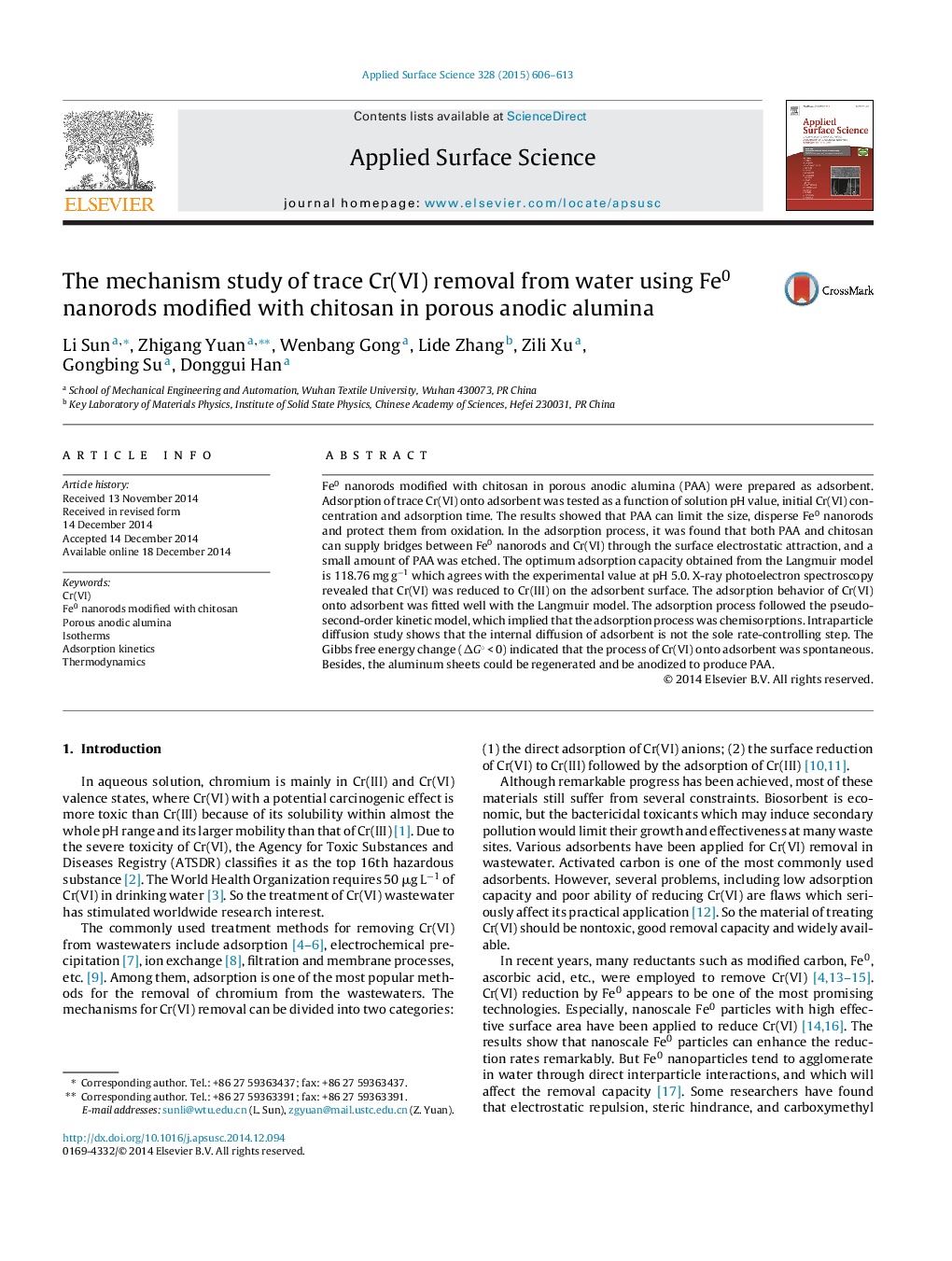| Article ID | Journal | Published Year | Pages | File Type |
|---|---|---|---|---|
| 5348874 | Applied Surface Science | 2015 | 8 Pages |
Abstract
Fe0 nanorods modified with chitosan in porous anodic alumina (PAA) were prepared as adsorbent. Adsorption of trace Cr(VI) onto adsorbent was tested as a function of solution pH value, initial Cr(VI) concentration and adsorption time. The results showed that PAA can limit the size, disperse Fe0 nanorods and protect them from oxidation. In the adsorption process, it was found that both PAA and chitosan can supply bridges between Fe0 nanorods and Cr(VI) through the surface electrostatic attraction, and a small amount of PAA was etched. The optimum adsorption capacity obtained from the Langmuir model is 118.76 mg gâ1 which agrees with the experimental value at pH 5.0. X-ray photoelectron spectroscopy revealed that Cr(VI) was reduced to Cr(III) on the adsorbent surface. The adsorption behavior of Cr(VI) onto adsorbent was fitted well with the Langmuir model. The adsorption process followed the pseudo-second-order kinetic model, which implied that the adsorption process was chemisorptions. Intraparticle diffusion study shows that the internal diffusion of adsorbent is not the sole rate-controlling step. The Gibbs free energy change (ÎG° < 0) indicated that the process of Cr(VI) onto adsorbent was spontaneous. Besides, the aluminum sheets could be regenerated and be anodized to produce PAA.
Related Topics
Physical Sciences and Engineering
Chemistry
Physical and Theoretical Chemistry
Authors
Li Sun, Zhigang Yuan, Wenbang Gong, Lide Zhang, Zili Xu, Gongbing Su, Donggui Han,
